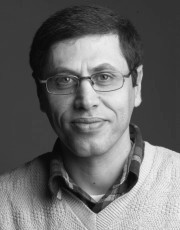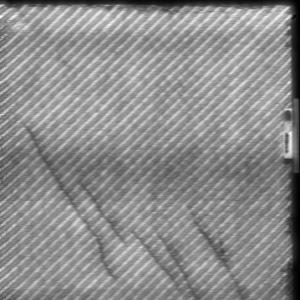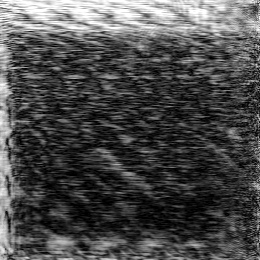- SDE researcher scores a first in aerospace materials terahertz imaging
- Second refugee student arrives today
- Editor:
- Chris Redmond
- Communications and Public Affairs
- bulletin@uwaterloo.ca
Link of the day
When and where
Electrical power will be off in Biology I from 8 p.m. this evening to 4 a.m. Friday. Computer equipment should be shut down in orderly fashion, especially UNIX systems. Contact CHIP if help is needed.
UW Bookstore will be open this Saturday, noon to 4 p.m.
“Learning to Learn,” with Hubert Saint-Onge, September 7, noon-1:30 p.m., at CBET in the Accelerator Building, suite 240. RSVP at ext. 37167 or estaffor@uwaterloo.ca by August 27.
Fall term tuition fees due August 27 (next Monday) if paid by cheque, September 5 by bank payment. Fee statements are available to students through Quest.
One click away
• Nova Scotia launches new programs to ease student loan payments for grad students
• Gender-neutral washrooms to come to UBC
• Iowa settles stuttering study lawsuit
• Giving abandoned bikes new life so New York students can ride
• Critics call for student loan ombudsperson
• The amount of stuff students bring to residence is mushrooming
Systems design researcher scores a first in aerospace materials terahertz imaging
 Hamid Tizhoosh, a professor in systems design engineering, and his student Kav Houshmand, have captured the first-ever successful terahertz images of composite materials used in the aerospace industry. “The images captured are the first terahertz images from this material ever acquired, and open a new direction in industrial quality control,” says Tizhoosh (left). “The goal is to detect defects not visible in x-rays, ultrasound or thermal imaging.”
Hamid Tizhoosh, a professor in systems design engineering, and his student Kav Houshmand, have captured the first-ever successful terahertz images of composite materials used in the aerospace industry. “The images captured are the first terahertz images from this material ever acquired, and open a new direction in industrial quality control,” says Tizhoosh (left). “The goal is to detect defects not visible in x-rays, ultrasound or thermal imaging.”
Terahertz technology is already at work in space — NASA uses it, along with the traditional x-ray, to examine the foam insulation on the shuttle Discovery’s external tank.
Tizhoosh explains: “Terahertz radiation occurs in a waveband where microwave radiation and far-infrared light overlap. Terahertz waves, also called T-rays, have distinct properties. For instance, they are completely absorbed by water and reflected on metallic surfaces. Many other materials, such as paper, wood, and plastic are transparent to T-rays. Since many transition and vibration frequencies of many molecules lie in the terahertz range, distinct signatures can be captured to distinguish different materials.”
 The first of these images (right) represents a terahertz reflection from a composite material panel; the second shows a terahertz transmission image from the same material. “In reflection mode T-rays will scan the surface of the material and can detect defects,” Tizhoosh says. “However, this is also possible with many other imaging technologies. In transmission mode, the T-rays travel through the material and provide information about the internal structure. Defects invisible to existing technologies such as x-rays and ultrasound may be detected.”
The first of these images (right) represents a terahertz reflection from a composite material panel; the second shows a terahertz transmission image from the same material. “In reflection mode T-rays will scan the surface of the material and can detect defects,” Tizhoosh says. “However, this is also possible with many other imaging technologies. In transmission mode, the T-rays travel through the material and provide information about the internal structure. Defects invisible to existing technologies such as x-rays and ultrasound may be detected.”
 The applications of terahertz technology include security and screening (recognition of explosives and hazardous materials, for example), biomedical imaging, and quality control of aerospace materials. The benefits are obvious: better quality control means better-quality materials in the aerospace industry, with fewer possible fatalities.
The applications of terahertz technology include security and screening (recognition of explosives and hazardous materials, for example), biomedical imaging, and quality control of aerospace materials. The benefits are obvious: better quality control means better-quality materials in the aerospace industry, with fewer possible fatalities.
But there is still work to be done, Tizhoosh says. “Among other improvements, the sensitivity of terahertz imaging still needs to be increased. Terahertz cameras can be then employed to see defects that have been undetectable so far.”
His research also looks at other aspects of machine intelligence and computer vision, including medical image processing with applications in breast and prostate cancer. In the aerospace materials project he collaborates with the Terahertz Research Center in Troy, New York, and the work is supported by the Canadian aircraft engine manufacturer, Pratt & Whitney Canada. The results will be published in winter 2008 after he and his team have validated their findings.
.
Second refugee student arrives today
The second refugee to be sponsored as a student at UW will arrive at Pearson Airport today. Samuel Banti will be met by the UW World University Service of Canada (WUSC) local committee, which is sponsoring him through its Student Refugee Program. Tariku Kebede, the student who arrived last year, will also be on hand to greet him.
Banti, like Kebede, has been accepted as a student in UW’s Faculty of Science; he will start part-time studies this September. Both are originally from Ethiopia; both lived for years in African refugee camps. The Student Refugee program (SRP) “fully supports the sponsored student for one year when they arrive in Canada,” says a message from Lisa ter Woort, a staff member in CECS who advises the group, “providing them with their basic needs while helping them to adjust to Canadian ways, to being a successful student, and helping these individuals move towards becoming self-reliant.” Some support may continue in the second year, she says. After that, the student is expected to support himself or herself through OSAP and part-time work.
UW’s WUSC local committee was established by students in 2005, with the SRP as their central program. They have raised support from Conrad Grebel University College, St. Paul’s College, the Renison English Language Institute, the faculties of arts and environmental studies, the president’s office, the associate vice-president international, and individual donors.
“We anticipate sponsoring a new student each year from now on,” ter Woort says. “This is a growing program.” That being so, she adds that the program is looking for more funding support to continue its work.
An update on Tariku Kebede, who began full-time science studies in January: “Tariku is performing well academically and has already made many contributions to the UW community through writing for Imprint, making presentations to students and staff, and working with the WUSC local committee to raise awareness of refugee issues.”
CPA staff

